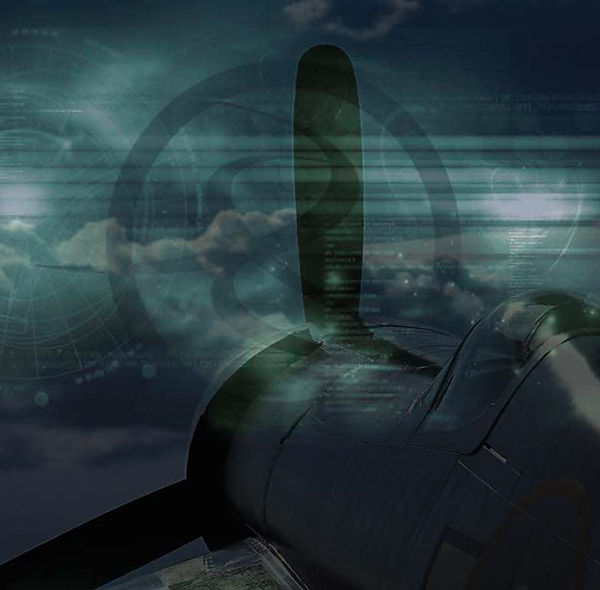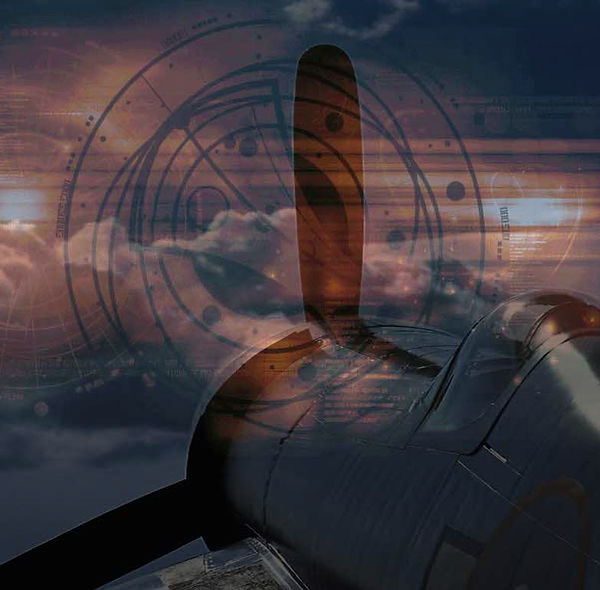
Hold your pointer on a tab in the menu on top of the page to view and handle the sub menus.


Corsair F4U , is the best fighter there is ...It's rugged...It's a workhorse...You can use it for ...everything, and it's effective ... You can shoot anything off or out that plane and it still goes ... !!"
The Vought F4U Corsair is an American fighter aircraft that saw service primarily in World War II and the Korean War. Demand for the aircraft soon overwhelmed Vought's manufacturing capability, resulting in production by Goodyear and Brewster: Goodyear-built Corsairs were designated FG and Brewster-built aircraft F3A. From the first prototype delivery to the U.S. Navy in 1940, to final delivery in 1953 to the French, 12,571 F4U Corsairs were manufactured by Vought, in 16 separate models, in the longest production run of any piston-engined fighter in U.S. history (1942–53).
The Corsair was designed as a carrier-based aircraft but its difficult carrier landing performance rendered it unsuitable for Navy use until the carrier landing issues were overcome by the British Fleet Air Arm. The Corsair thus came to and retained prominence in its area of greatest deployment: land based use by the U.S. Marines.The role of the dominant U.S. carrier based fighter in the second part of the war was thus filled by the Grumman F6F Hellcat, powered by the same Double Wasp engine first flown on the Corsair's first prototype in 1940.The Corsair served to a lesser degree in the U.S. Navy. As well as the U.S. and British use the Corsair was also used by the Royal New Zealand Air Force, the French Navy Aéronavale and other, smaller, air forces until the 1960s.
Some Japanese pilots regarded it as the most formidable American fighter of World War II and the U.S. Navy counted an 11:1 kill ratio with the F4U Corsair.
After the carrier landing issues had been tackled, it quickly became the most capable carrier-based fighter-bomber of World War II.
The Corsair served almost exclusively as a fighter-bomber throughout the Korean War and during the French colonial wars in Indochina and Algeria.
The F4U ( F-FIGHTER -4-4TH MODEL U-CHANCE VOUGHT ) is a single-engine, single-seat, low-wing monoplane, designed as a carrier-based and land-based fighter or fighter-bomber. It is equipped for operation as a long-range fighter when carrying droppable fuel tanks, or as a fighter-bomber when carrying either one or two bombs , provision can be made for carrying six .50 caliber Browning machine guns, eight wing rockets and two 11.75" rockets. The approximate gross weight is 12500 pounds with full ammunition loading and full main fuel tanks, but no external loading.
Because of the distinctive design of its inverted gull wing, Vought's F4U Corsair became known as the "Bent Wing Bird". As it attacked the enemy, the air passing through the radiators integrated in its wings created a sound that the Japanese named "Whistling Death." But to the pilots who flew it, and to the Marines on the ground that it supported, the Corsair also became known as " The sweetheart of Okinawa", "The Hog," from its overall size and weight, and "The Great Iron Bird" thanks to WWII Corsair Pilot Don Wilson. The F4U Corsair was one of the most successful fighters in the history of military aviation.
As the role of the Corsair evolved from fighter to fighter-bomber and finally to attack aircraft, many changes and improvements were made to the airframe, although the proven basic design remained the same. Each successive version of the Corsair had more ground attack capabilities than the one before it.
At a time when advances in aircraft design were moving forward, the Corsair remained in production for over a decade. It was designed as a fighter, it was developed into an fighter-bomber. Later a ground attack variant was produced. It became the first radar-equipped night fighter used by the Navy and Marines, and photographic reconnaissance variants were also developed.
The success of the Corsair during World War II can be proved by numerical data. In the air, it compiled an 11 .3 to 1 kill to loss rate as its pilots shot down 2140 enemy aircraft while losing only 189 planes. This was the best ratio of any fighter in that war. F4Us flew over 64000 sorties during World War II, making over 10000 strikes against enemy airfields, 2800 raids against transportation facilities, and 4000 attacks against ships of all types.The aircraft served with the US, Britain, France, Canada, New Zealand and Australia during WW2, Korea, The Suez Crisis, over French Indochina and Algeria. Some served in other Central and South American air forces, including Honduras, El Salvador and Argentina.
Development of the F4U began in 1938, when the US Navy ordered a new carrier-based fighter.The first prototypes were ordered on 30 June 1938. The prototype first flew on 29 May 1940. The US Navy placed an order for 585 F4U-1s on 30 June 1941.The first Corsairs were handed over to the US Navy 31 July 1942 .The first carrier trials were carried out on September 25, 1942 aboard the U.S.S. Sangamon (CVE-26) by Lt. Sam Porter in Buno 02159. These trials drew attention to a number of problems which prevented the Corsair from going into carrier service with the U.S.N. for some years. This was proved wrong when Corsairs delivered to the Royal Navy were flown from carriers with great success from April 1944. By February 1943 Vought received large orders for the Corsair, which was now, designated the F4U-1A . By February 1943 the aircraft was operational with the US Marine Corps against the Japanese in the Pacific area. Finally the F4U was cleared for deck ops in late 1944. By this stage the F4U has seen combat from carriers in both Europe and the Pacific since April 1944. The Corsair’s contribution to the war against Germany was restricted to supporting Home Fleet strikes against this target. The British Corsairs were flown in strength with the Royal Navy’s Fleet Arm designated as the Mks-I, II, IIA, III and IVs. Five years after the war, it again proved to be a valuable tighter-bomber and ground attack aircraft during the Korean War in 1950.The F4U-7 remained in service until 1964 with the French Navy in Indochina. The continued to serve in Honduras, El Salvador and Argentina until the mid-seventies.
Being the most important naval attack fighter of W.W.II and served with distinction as the most outstanding carrier based fighter of WWII , the ChanceVought Corsair F4U remained in production for thirteen years up to 1952, in many versions ranging from F4U-1 to F4U-6 (AU-1) and F4U-7. A total of 12581 Corsairs were built by Brewster, under the designation F3A-1s, Goodyear designated FG-1s and Vought. At its peak Vought was producing one complete Corsair every 85 minutes.
WHAT is the F4U / FG / F3A "CORSAIR" ? (*)
